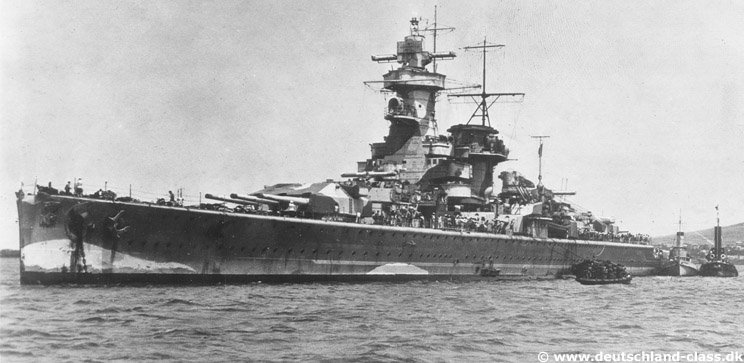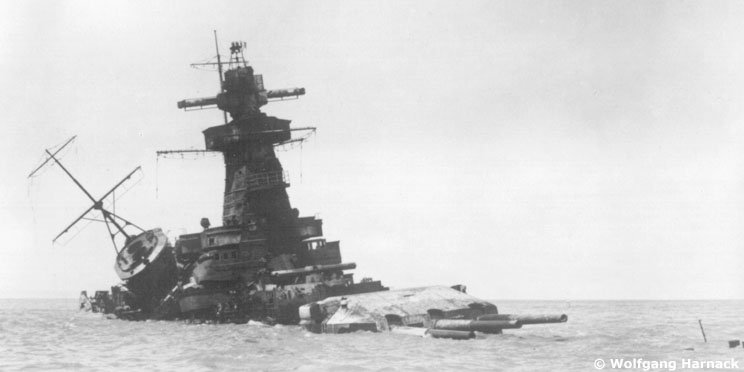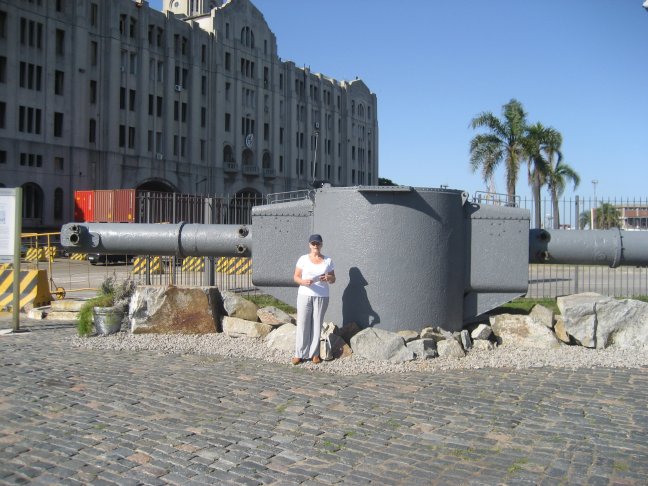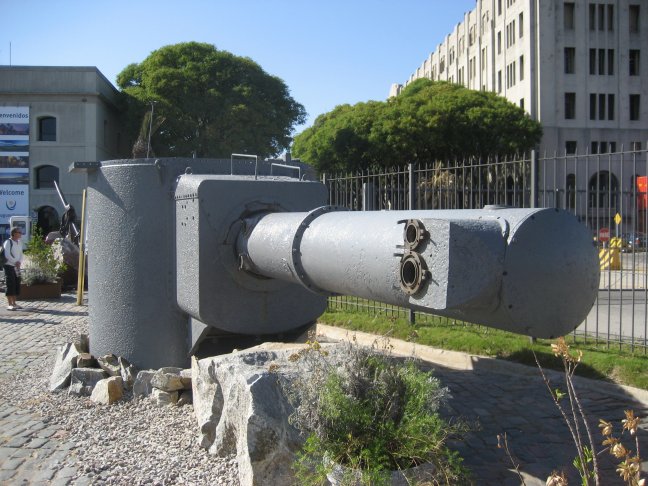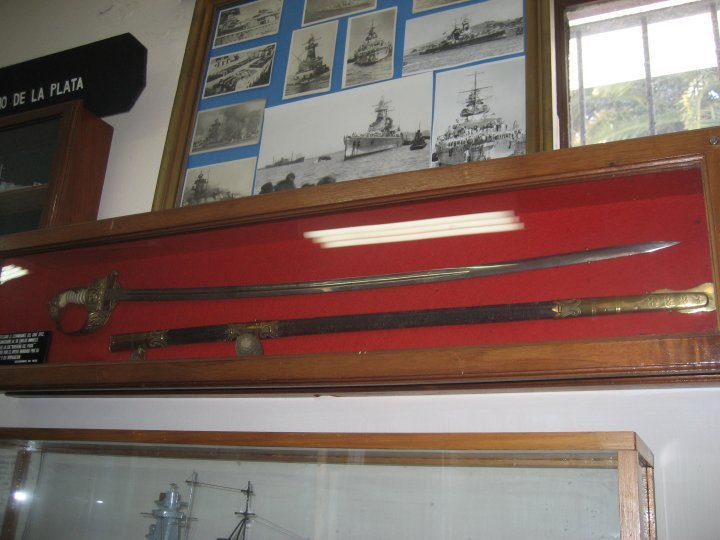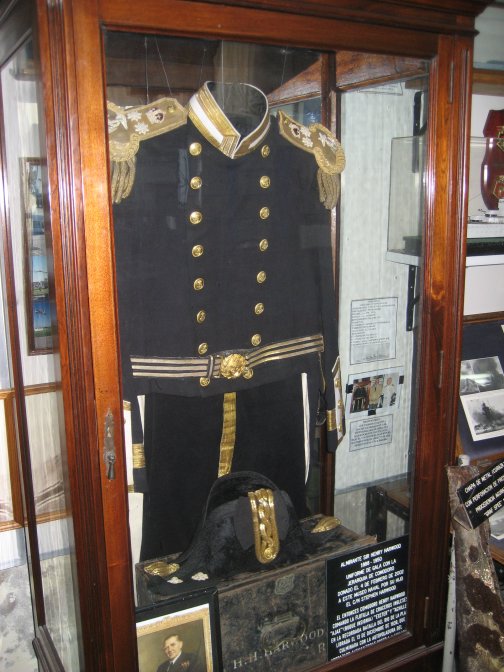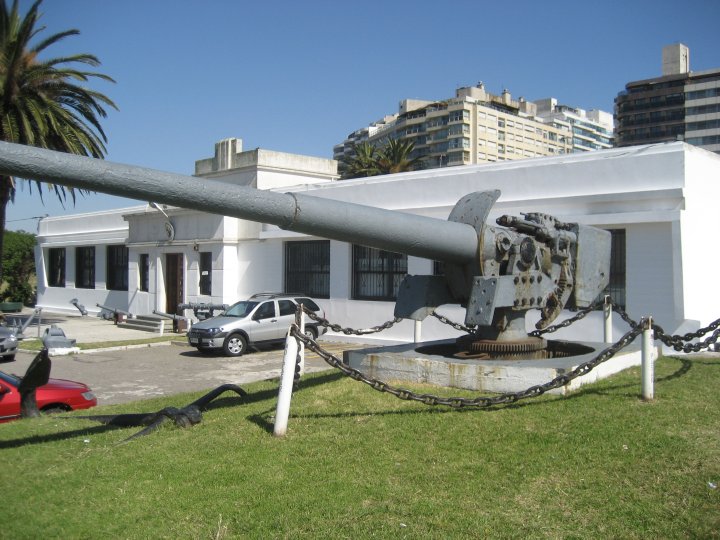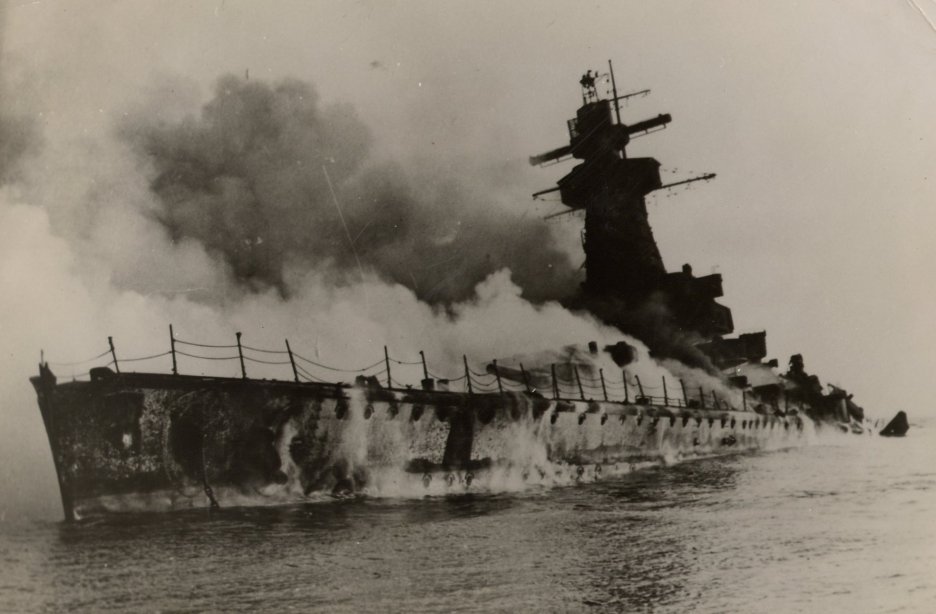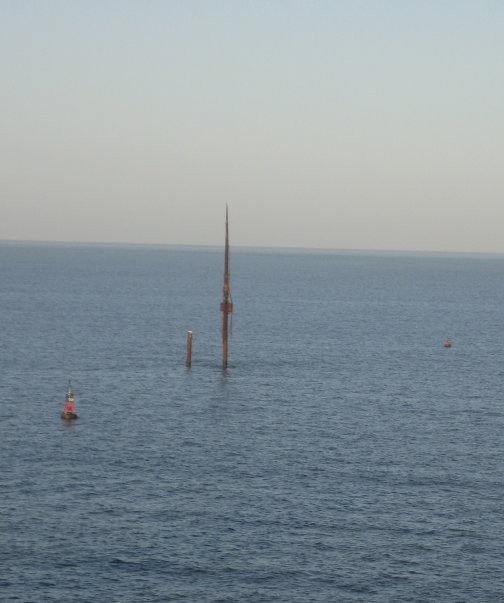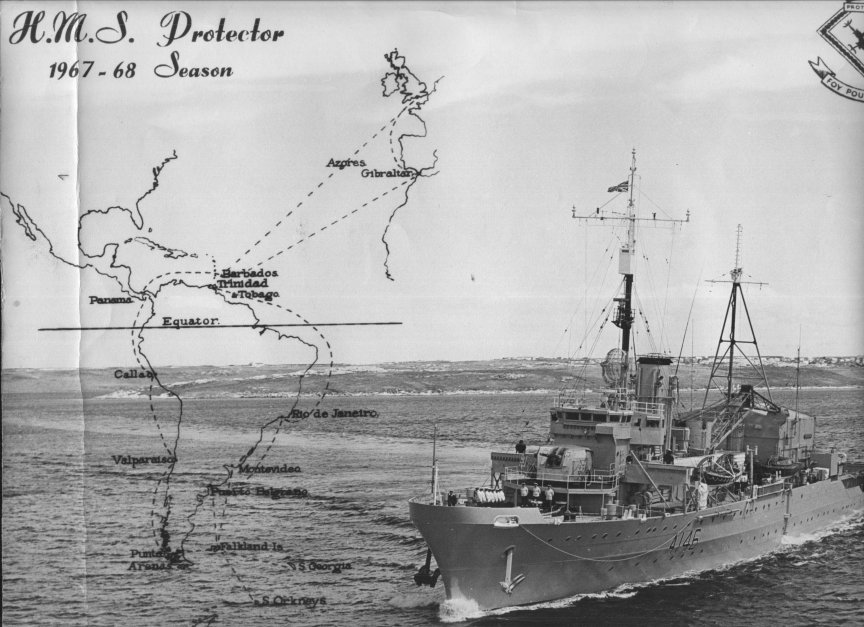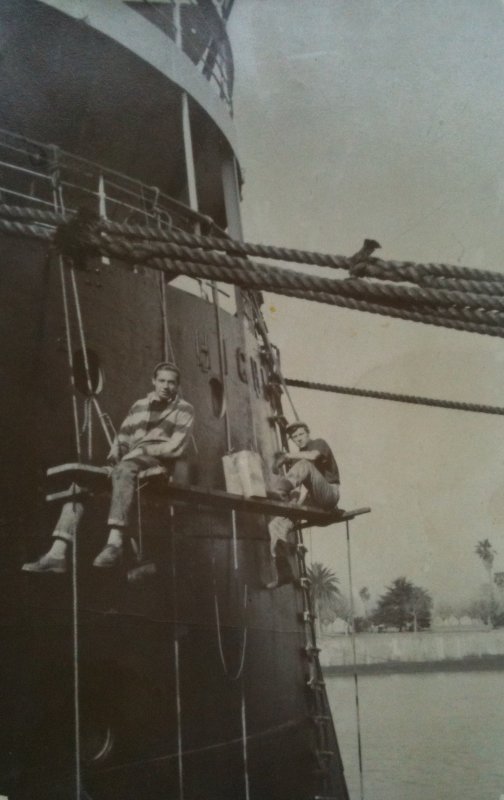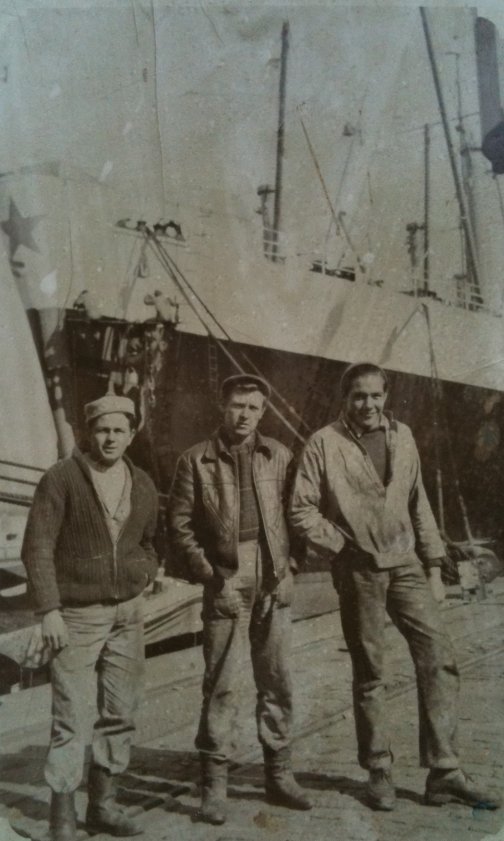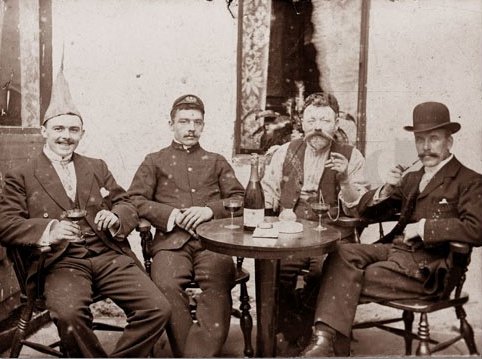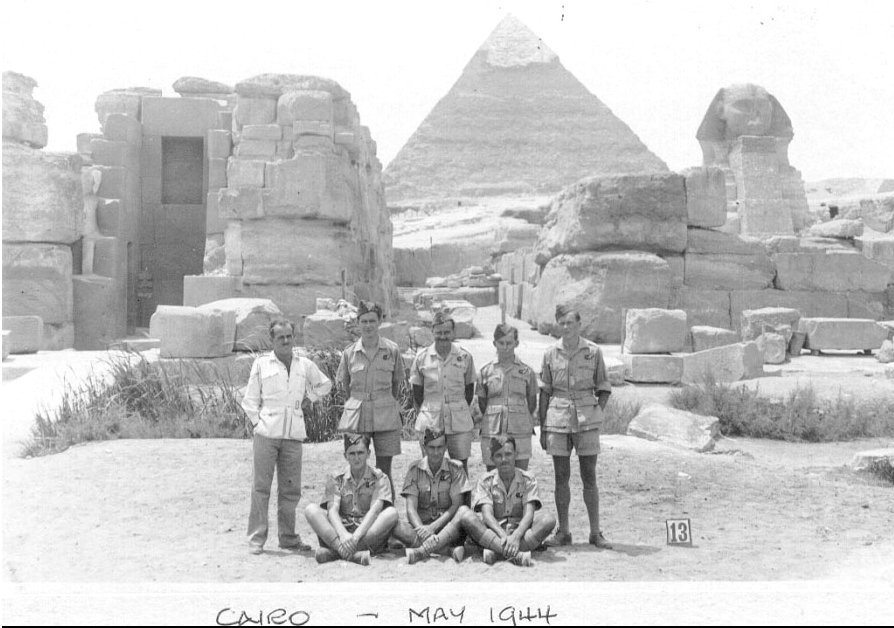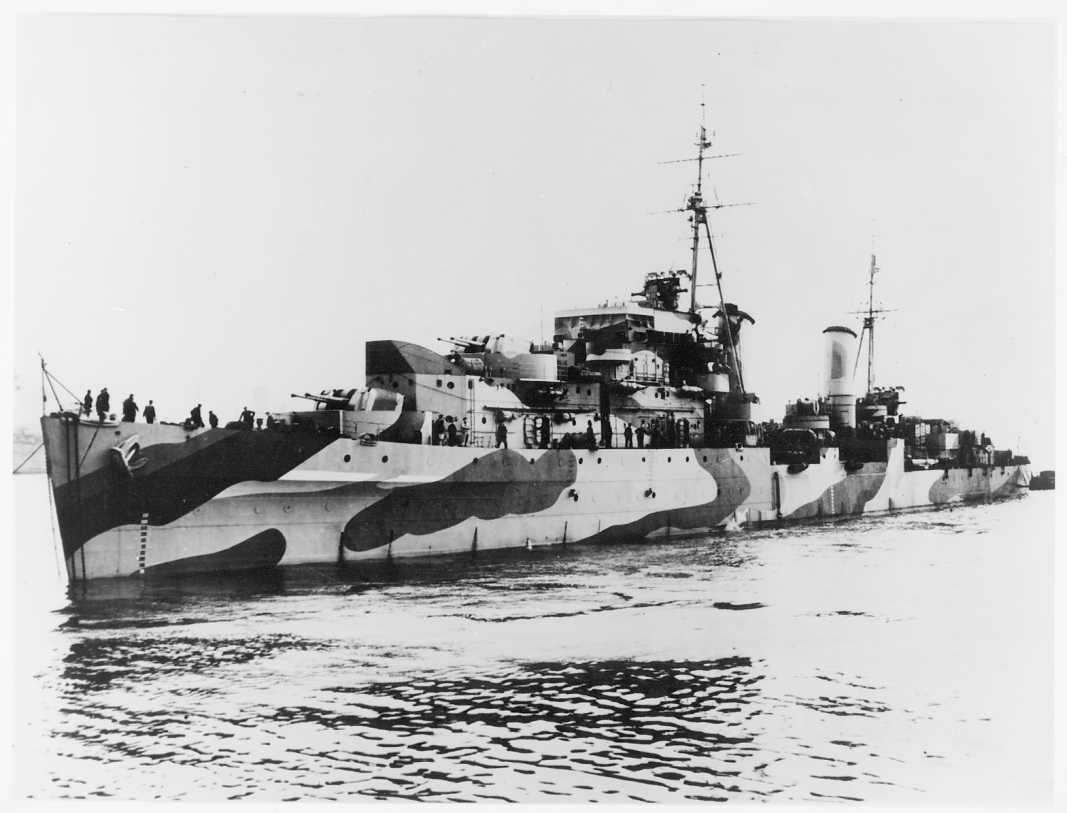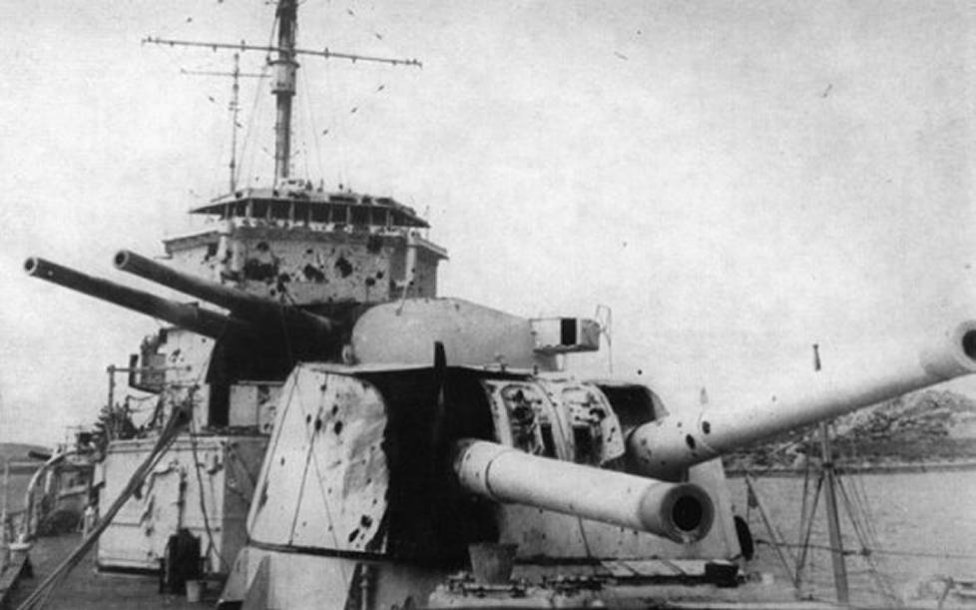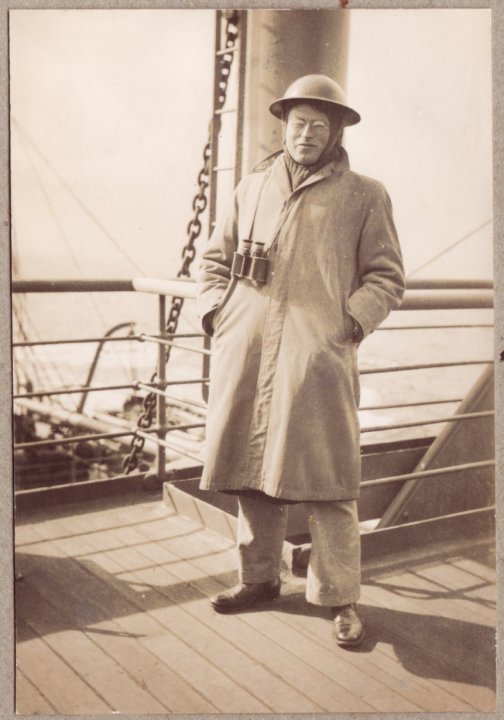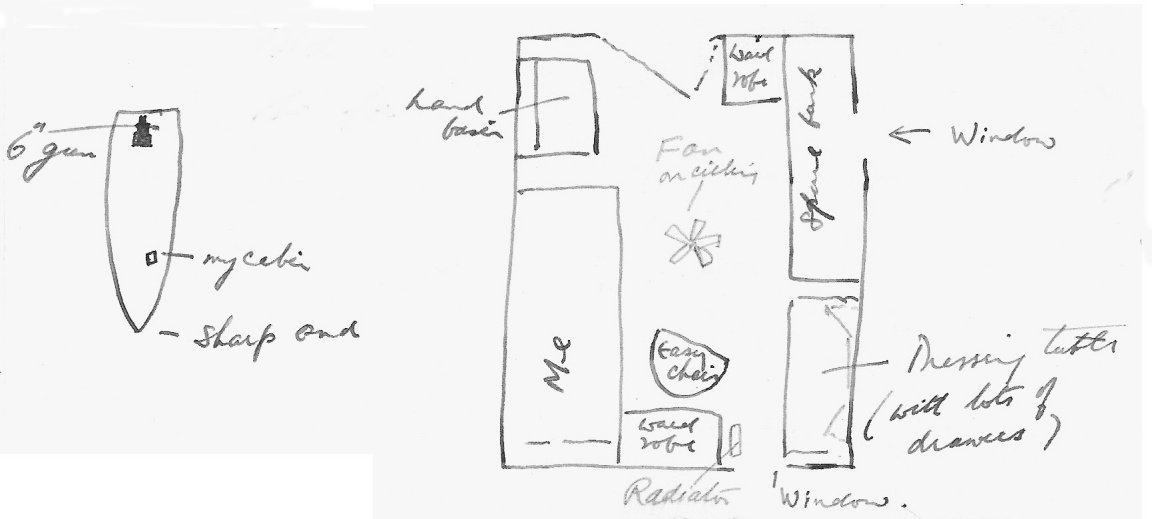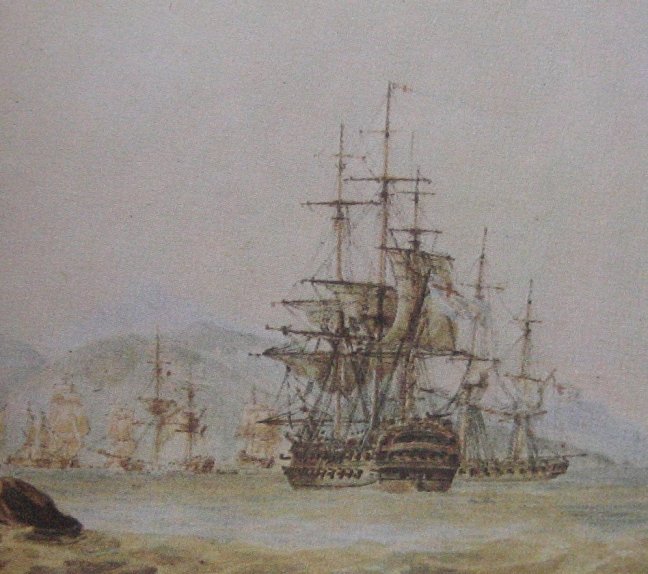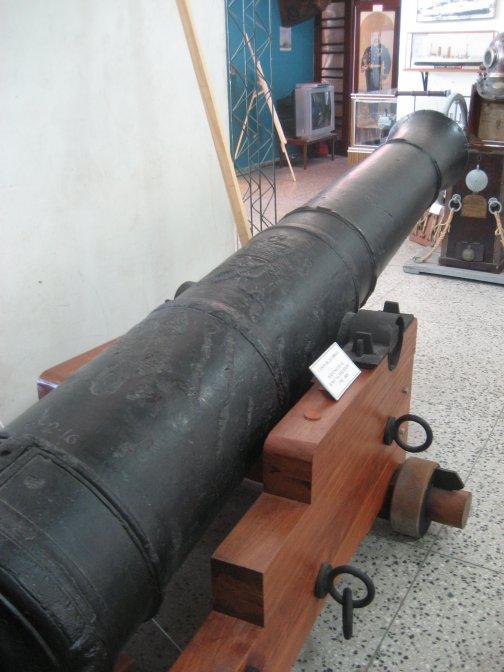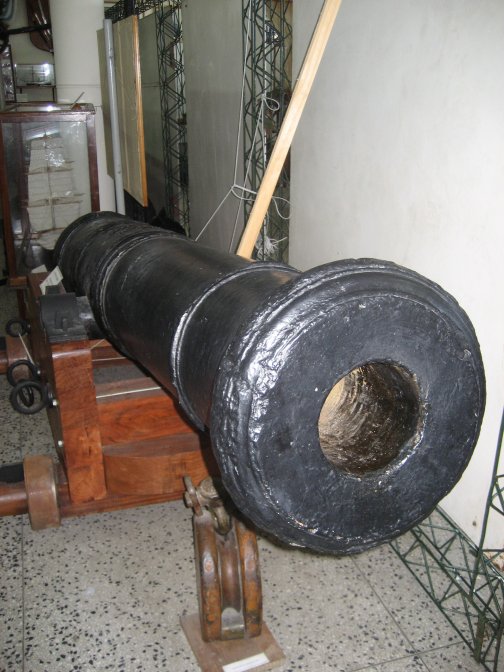Montevideo was founded by the Spanish in the early 18th century as a military stronghold. Its natural harbour soon developed into a commercial center competing with the Argentine capital of Buenos Aires.
The River Plate is the esturary formed by the combination of the Uruguay River and the Parana River. Where the rivers join it is 30 miles wide and it runs to the southwest growing to 137 miles wide where it opens onto the Atlantic Ocean, making it the widest estuary in the world.
The narrow channel into Montevideo is full of container ships and as you aproach you can see the mast of the sunken ship Highland Chieftain. The wreck of the Graff Spee is some 3 miles to your left.
The mseum also yielded a cannon from Nelson’s former flagship Agamemnon.

